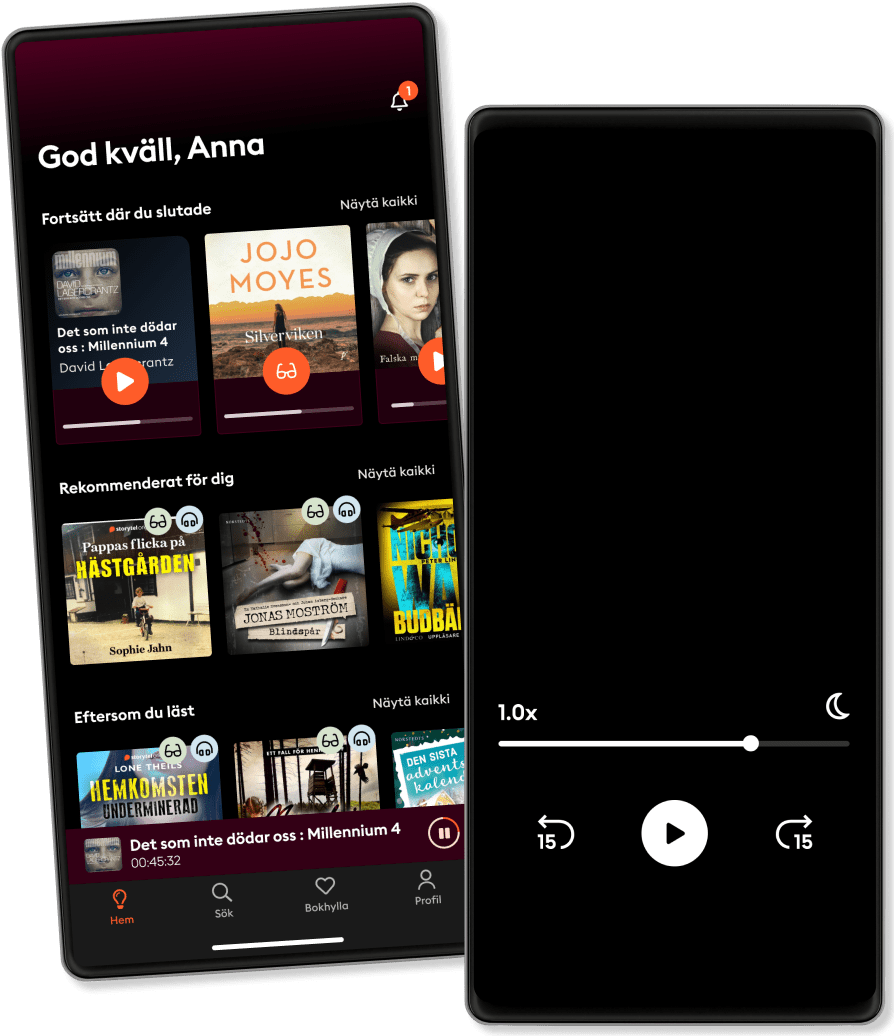Écouter et lire
Entrez dans un monde infini d'histoires
- Lire et écouter autant que vous le voulez
- Plus d'un million de titres
- Titres exclusifs + créations originales Storytel
- 14 jours d'essai gratuit, puis 9,99 € par mois
- Annulation facile à tout moment

Augmented Reality and Virtual Reality: Exploring Digital Worlds
- Par
- Avec :
- Éditeur
- Durée
- 1H 59min
- Langues
- Anglais
- Format
- Catégorie
Documents et essais
Augmented Reality (AR) and Virtual Reality (VR) have transformed the way we interact with digital environments, offering immersive experiences that blend the real and virtual worlds. While both technologies enhance perception, they do so in fundamentally different ways. AR overlays digital elements onto the real world, enriching reality with interactive, computer-generated enhancements. VR, on the other hand, creates fully immersive digital environments, transporting users into a completely virtual space where physical surroundings disappear.
The evolution of AR and VR has been a fascinating journey, driven by advancements in computing power, graphics rendering, and sensor technology. Early experiments in virtual reality can be traced back to the 1960s, with devices like the Sensorama and the first head-mounted displays. However, it wasn’t until the 2010s that VR technology became widely accessible, thanks to companies like Oculus, HTC, and Sony. AR’s development followed a different trajectory, gaining mainstream attention with mobile applications like Pokémon GO and smart glasses designed for enterprise use.
One of the key distinctions between AR and VR is their method of user interaction. AR enhances real-world experiences without replacing them, allowing users to see both physical and digital elements simultaneously. This has led to widespread adoption in fields such as retail, education, and healthcare. VR, in contrast, immerses users in entirely synthetic environments, making it ideal for gaming, training simulations, and remote collaboration. The level of immersion is influenced by factors such as display resolution, field of view, motion tracking, and haptic feedback, all of which contribute to a sense of presence within a virtual space.
© 2025 Cammy Fetchens LLC (Livre audio ): 9798318349898
Date de sortie
Livre audio : 14 mars 2025
Mots-clés
- Les Secrets de la femme de ménage - Tome 2 - Prix Babelio 2024 Polar et Thriller Freida McFadden
4.7
- La femme de ménage - Tome 1 Freida McFadden
4.4
- La femme de ménage voit tout - Tome 3 Freida McFadden
4
- La psy: Elle connaît tous vos secrets, découvrez les siens ... Freida McFadden
4.4
- Steamy : Arthur, qui est moche Joy Majdalani
4.8
- Harry Potter à L'école des Sorciers J.K. Rowling
4.8
- Harry Potter et l’Ordre du Phénix J.K. Rowling
5
- Harry Potter et la Coupe de Feu J.K. Rowling
4.5
- Twisted : Twisted Love - Tome 01 Ana Huang
4.6
- Harry Potter et la Chambre des Secrets J.K. Rowling
5
- Harry Potter et le Prince de Sang-Mêlé J.K. Rowling
5
- Jacaranda: Prix Renaudot 2024 Gaël Faye
5
- Harry Potter et le Prisonnier d'Azkaban J.K. Rowling
4.7
- Captive 2 Sarah Rivens
4.8
- Fourth Wing (1 of 2) [Dramatized Adaptation]: The Empyrean 1 Rebecca Yarros
4.7
L’offre Storytel :
Accès à la bibliothèque complète
Mode enfant
Annulez à tout moment
15 heures
Pour accompagner vos loisirs
1 compte
15 heures/mois
30 heures
Pour vos trajets quotidiens
1 compte
30 heures/mois
45 heures
Pour écouter tous les jours
1 compte
45 heures/mois
Français
France